|
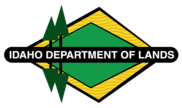
IDL Insider
The latest news for employees, written by employees
Summer 2022
|
Wildfires and IDL staff in Alaska
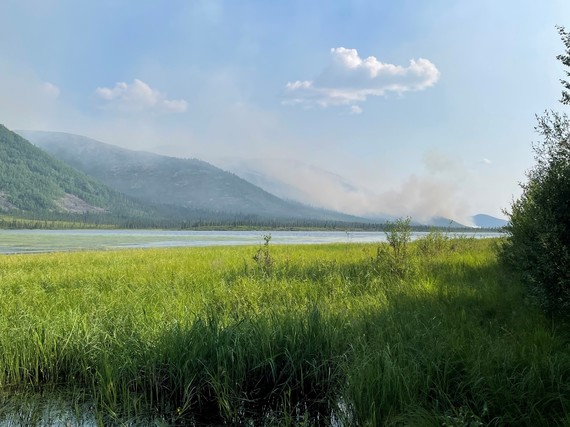 Dalton Highway Complex, Douglas Fire, Alaska
By Julia Lauch
IDL Fire Management
I had the opportunity to serve with the South Idaho IMT3 as Incident Commander trainee on their recent assignment to Alaska. This was my first roll with the team and I was impressed with their skill and high level of function.
Things can be more logistically challenging in Alaska than the lower 48. Due to connectivity, the Incident Command Post was in Fairbanks, three and a half hours from the forward operating base near the Yukon River crossing. We had two additional base camps beyond that.
To paint the picture of the expansive landscape even further, when we took over the Dalton Highway Complex we began with six fires, five of which were limited management, meaning that we were protecting the Dalton Highway, the Alyeska Pipeline, dispersed mining operations, and other identified values, but not suppressing the fires. Four of the fires were north of the Yukon River, with the furthest being a 3-hour drive north to the Brooks Range. These were all North Ops.
The remaining two fires were South Ops, south of the Yukon River and potentially threatening the community of Rampart. It took five and a half hours (including two fueling stops) in a type 3 helicopter to recon the 5 southern-most fires. It would have been another 2 hours of flight time to recon the one in the Brooks Range.
Radio communications for the entirety of the complex was an initial challenge, especially as we entered the community of Rampart. During the warm months Rampart is only accessible via air or boat, hence the 4 boats on EERAs. Entering the tribal community added social/political complexities and required multiple days of patience before the proper contacts had been made and the initial boat with overhead personnel left the Yukon River crossing for the 2-hour boat ride to the community. We were fortunate that the local zone management had ordered a long-time Alaska smokejumper, qualified OSC2 who grew up in the community of Rampart, to liaise with the community.
He quickly became our South Ops and was an invaluable asset. From my perspective, despite the distance our complex encompassed and the logistical challenges, the most challenging part was the constant new starts that began within the Complex area, that we were not responsible for. Within the first three days after taking command, we had added two additional fires to the Complex, along the highway, situated between our initial fires. Beyond that, many more fires started that the zone opted to not include in the Complex. Some required more suppression action while others did not. A few were between our fires and Rampart.
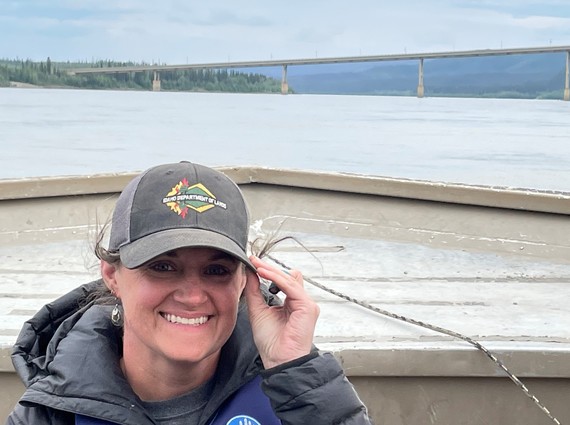 Julia Lauch on Yukon River
Regardless of the additional fires being excluded from the complex, they impacted our operations. Some were along the roadside and needed road guards for a period of time to keep traffic safe, some requested crew transportation via the helicopters we had assigned to the Complex, and some requested use of the boats for inserting crews. This required close coordination between the zone, incident command, the two operations chiefs and air ops, in order to prioritize missions and communicate those priorities and scheduling.
To me, the mark of success on that front was during the closeout when the zone FMO said it felt like we were an extension of the zone during our stay. This was my first fire assignment in Alaska. I would encourage everyone to take advantage of the opportunity to experience fire in Alaska. It has the potential to broaden your perspective and open your mind to creative alternatives unlike other places. This assignment is not something I will ever forget, and I’m eager to go back again!!
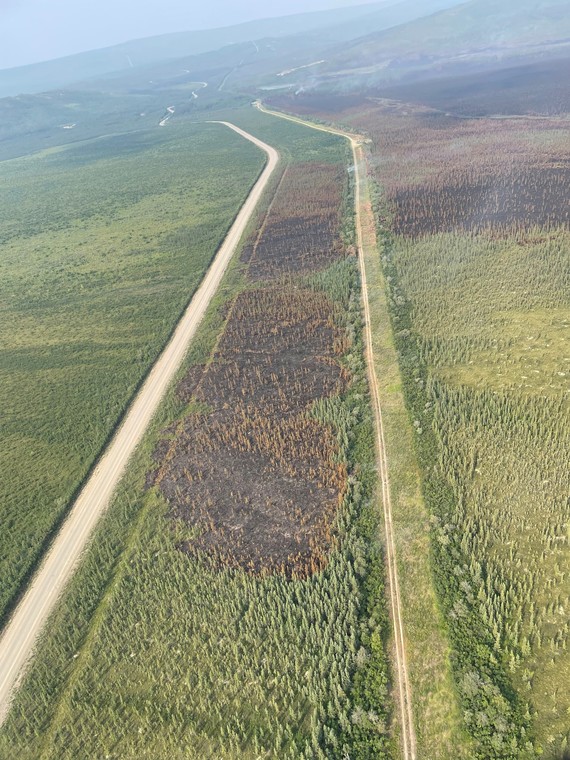 Dalton Highway Complex
Alaska logistics
By Tyre Holfeltz
Wildfire Risk Mitigation Program Manager
I had the pleasure of serving as the Logistics Chief for Idaho Team 1, IMT3. This particular assignment proved to be yet another new and fun experience for me.
Logistically, I was called upon to support operations initially covering fires from the Yukon River Crossing to North of Snowden, AK. It was clear that communications was going to be a substantial issue that would need to be worked through. With the talents of one of the Base Camp Managers and the support of Alaska Fire Service Communication shop, they were able to create and deploy a repeater system that allowed for a single communications network across the entire fire complex.
The next more interesting logistics task to manage was fresh food for the line personnel. Catering services don’t exist in Alaska! All fresh food is ordered through the cache and sent to the line in “Food Boxes”. The food is bulked packed and when delivered to their end destinations have to be divided amongst the resources. The food comes as basic ingredients that have to be cooked! What an experience and a treat for the line folks, picking your own food, eating what you want, candy bars galore included. To supplement the boxes folks designated as camp cooks would pick fresh blueberries and sunberries, catch fish, and horse trade with other cooks to make for some fantastic meals. All this food brought some great opportunities to hungry wildlife to include, grizzle and black bears, wolves and the occasional moose. This resulted in some unique solutions to include the use of Bear Dogs.
The dogs would walk the perimeter of the camp locations seeking scent from the local neighbors and then proceed to mark the area indicating this is my home, STAY OUT. For the most part this worked really well, but there were a few that were persistent. The creative juices began to flow from the line folks and a plan was hatched. We were able to purchase enough parts to put together an electric fence system to surround the food and the garbage. By doing this we were able to not have to call in a shooter for control purposes, which was a big win for the incident.
A final highlight was again another first! I have never had to find and inspect EERA boats. This incident called for four as they were needed to make supply runs and deliver line personal to the small river community of Rampart, AK. This is definitely something I feel we need to further explore here in Idaho - just think of the efficiency we could gain. Everyone I’ve talked to who has been to Alaska said I had to go and I’m glad I did as it was a very rewarding experience.
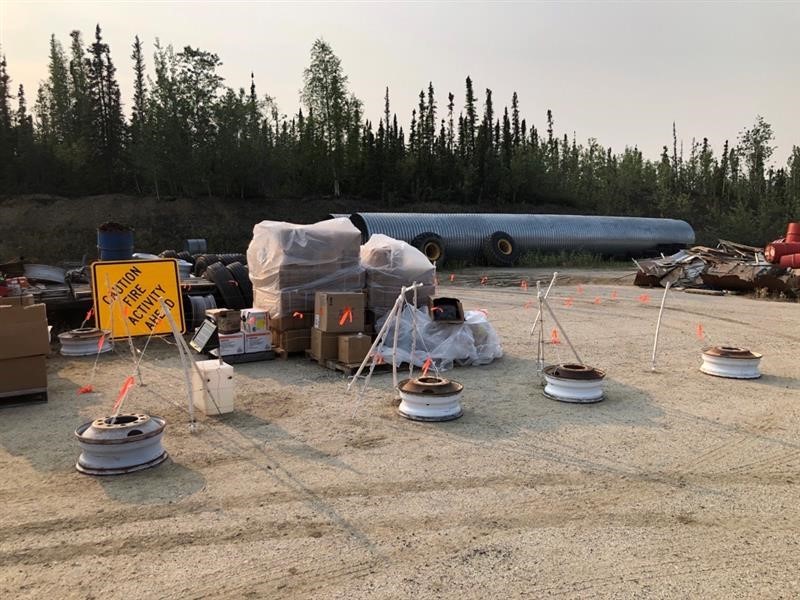 Bear Fence, by Wind River Bear Institute
|
|
Riparian habitat restoration project
By Jonathan Luhnow
LRSS - Endowment Lands Coordinator

The POL Area was approached by the Kootenai Tribe last year about being allowed to implement a riparian habitat restoration project on endowment lands. The parcel of land involved was a broad floodplain of Deep Creek about 2 miles from where it enters the Kootenai River. This segment of Deep Creek is bull trout critical habitat and the restoration project would benefit bull trout and burbot (ling cod) juvenile rearing habitat. Inputs to the food web would also likely increase. The stream had become entrenched over the years and ran near the train tracks, no longer utilizing the floodplain.
|
This floodplain is a persistent grassy area and not suitable for timber production so the POL Area agreed to the project. Interestingly enough the area immediately adjacent to the floodplain is in a current IDL timber sale and can be logged any day now. Portions of the stream channel are to be re-routed, off channel wetlands reconnected to the stream for when water is high, habitat structures created, and the area revegetated.
 There will also be a small parking area and trails created to maintain the traditional public use of the area. The entire project is being handled by the Kootenai Tribe utilizing BPA funds. They have completed similar projects in the area in the past several years. Work is targeted to be completed this year.
|
|
IDL hosts meeting with African delegates
Mick Thomas
Division Administrator
Minerals, Navigable Waters, Oil & Gas
On Friday, June 17, IDL hosted a meeting with a number of African delegates to discuss mineral policy, environmental protection, and responsible resource development. This symposium was the result of the combined efforts of the U.S. State Department, Global Ties Idaho, the Idaho Geological Survey and IDL.
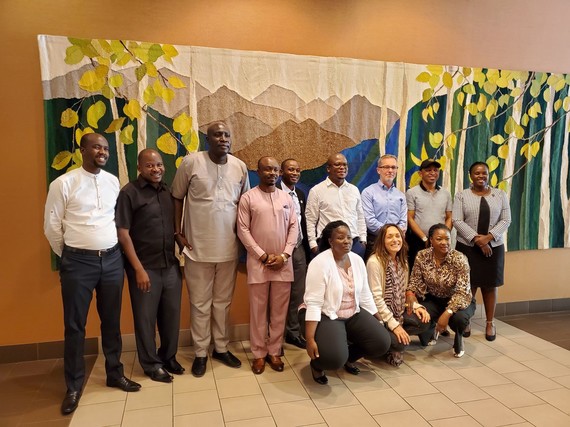 Representatives included:
- Ms. Aimee Man A. Muyumb, Associate Judge, Democratic Republic of the Congo
- Grâce Tshoma Numbe, Executive Director, Oil & Mines Governance Centre, Democratic Republic of the Congo
- Clement Mills, Principal Procurement Officer, Ghana Minerals Commission, Ghana
- Ms. Gladys Mong’are, Parliamentary Liaison Officer, Kenya
- Mr. Paul Mirie, Chief Mineral Economist, Ministry of Petroleum and Mining, Kenya
- Aly Diarra, Project Specialist, Pactworld.org, Washington D.C.
- Ms. Taciana Peão Lopes, Co-Founder & President, Mozambican Women of Energy, Mozambique
- Mr. Marcelino Tauzene, Manager Stakeholder Engagement and Communications, Mozambique
- Daniel Gbondo, Esq., Minerals Policy Advisor, Ministry of Mines and Mineral Resources, Sierra Leone
- Emmanuel Sandi, Deputy Secretary, Ministry of Mines and Mineral Resources, Sierra Leone
- Caroline Aguti, Principal Environment Officer, Ministry of Energy and Mineral Development, Uganda
- Mr. Nassa Bbiira Kiwanuka, Executive Director, Midwesterna Region Anti-Corruption Coalition, Uganda
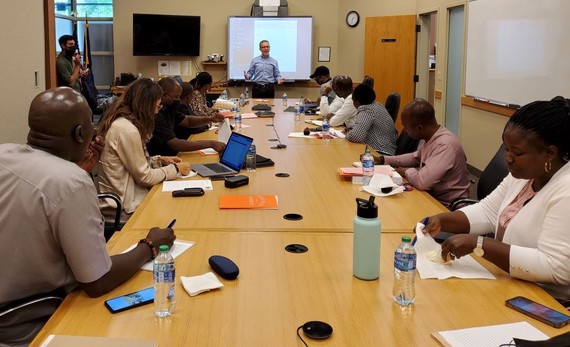 After initial introductions I provided an overview of mineral policy and regulation in Idaho. I was already familiar with the contrast between the Idaho (and U.S.) mineral industry and those of Africa. These folks had come 1/3 of the way around the planet with the hope of developing new ideas. They wanted to develop their resources in a way that was sustainable, helped develop the region, and protect the environment of their citizens.
There was not an agenda provided by the Global Ties representative. I opened with a summary of mines that are regulated on the state and federal level, and then discussed how we update and review reclamation plans in Idaho.
As the discussion progressed, questions continued to revolve around how to initiate and maintain positive change in their culture around mining. I wrote on the board “Transparency”. I said this is one of the cornerstones of successful regulation and resource management. Transparency leads to accountability and the development of consistent and fair laws for everyone involved.
Questions that came:
DRC Judge Aimee Manyong (through a French translator) “It is interesting that Idaho has such a diverse mineral portfolio but is also the state with the least regulation.” I responded “You can have CLEAR regulation, without OVER regulation. When everyone knows the rules, and those rules are consistently followed, an operator can achieve success, while at the same time protecting resources.”
Ms. Caroline Aguti – Uganda “How do you negotiate a contract? We struggle to reach agreements that benefit the people.” I shared, “In your countries, each contract is built from scratch (using a partnership broker). This takes up a huge amount of time and resources for everyone and puts you at a disadvantage because you have no agreed terms walking into the negotiations. A better method is to develop a contract template beforehand – using your current law as a guide. Vet this template through your counsel, post it on your website, and stick to it. This can achieve two things – one, it provides a consistent plan for you to follow in all negotiations, a plan that will stick because it follows the rule of law. Two, if all the operators and stakeholders know they are playing by the same rules it should build trust in your program.
The conversations continued for a total of two hours. In the end Idaho and our mineral industry received solid praise for collaboration, transparency, and how we work together to ensure sustainable production that benefits the citizens.
|
|
Fire crews completing their readiness review
Gary Billman, P.G.
Lands Resource Specialist Senior—Minerals/Geologist
These are photos I took while in the Sandpoint office acting as Area Manager. Photos show Sandpoint (Pend Oreille/Bonners Ferry) fire crews completing their readiness review in not so favorable weather (but dedicated) and some seasoned firefighters walking through the pump system of the engines with newer firefighters.
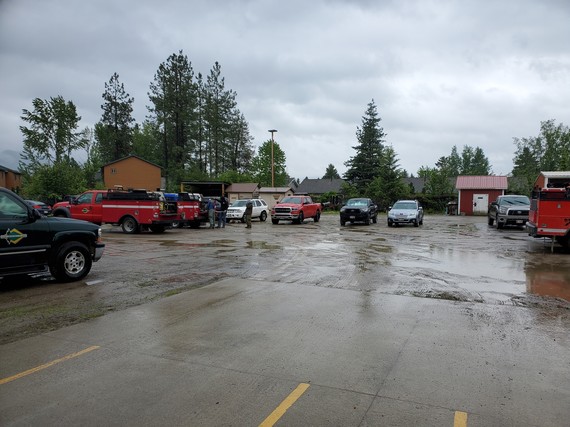

Tactical water tender
Gary Billman, P.G.
Lands Resource Specialist Senior—Minerals/Geologist
While on a fire assignment in our HEMTT (tactical water tender) on the Halfway Hill fire in Fillmore, UT, I was able to capture this photo. It is of another HEMTT that IDL got from the FFT program for a rural fire department. We interact with so many agencies and rural fire departments in this program and on fires, that I thought this would be a good photo.
We also unintentionally watered the cattle that were still out on the alotments……
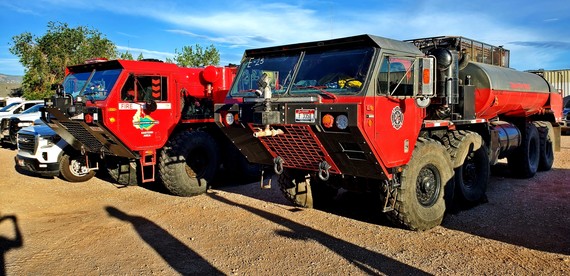
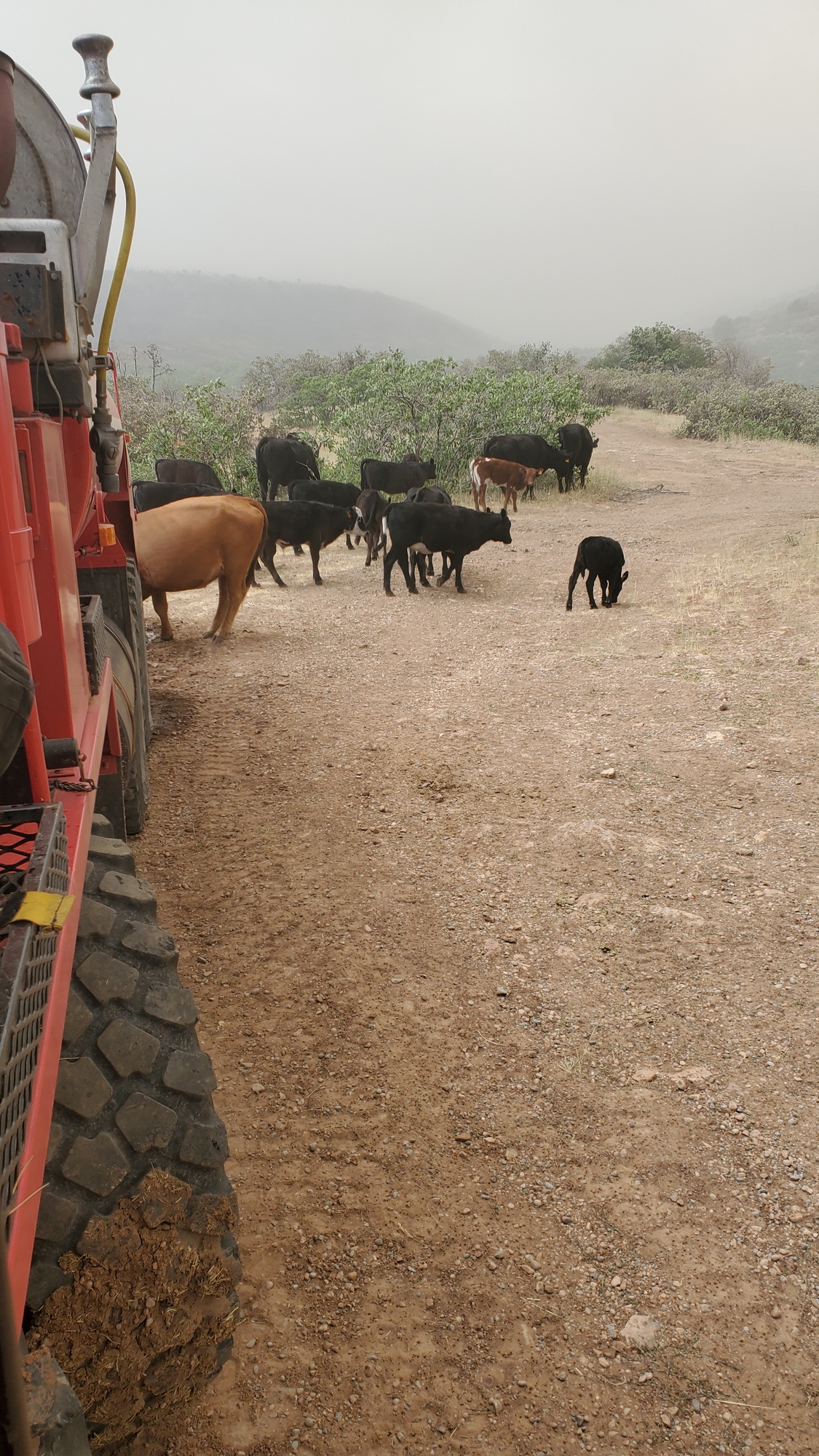
|
|
Building bridges
Jon Songster
Bureau Chief - GNA
Through the GNA partnership, IDL and Idaho Panhandle National Forest staff worked in collaboration to replace the East Fork Boulder Creek bridge near Bonners Ferry. IDL contracted C.E. Kramer Crane and Contracting Inc. to replace the existing wooden structure with a new steel bridge that will allow for fish passage, access for wildfire management, and safe transport of forest products from the Timbuck Stew timber sale.
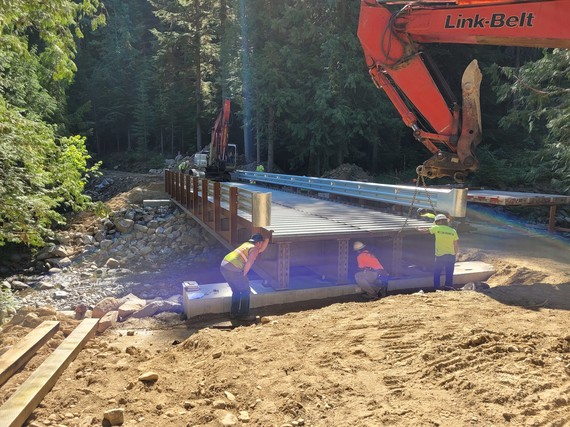
Employee milestones
|
|
March
Jennifer Carlson, 10 years
David Gregory, 15 years
Katina Kienlen-Hoffer, 15 years
Ruth Luke, 10 years
Adrienne Marrow, 5 years
Josh Purkiss, 5 years
Jay Sila, 30 years
April
Elise Fahrer, 5 years
Eric Klein, 10 years
Brydon Proctor, 5 years
May
Donna Caldwell, 10 years
Cody Griffin, 10 years
Jeremy Isbelle, 5 years
Etherlene Lanuza, 5 years
|
June
Ara Andrea, 15 years
Charles Christians, 5 years
Colton Finch, 5 years
Lucas Pate, 5 years
Chad Ramsay, 20 years
July
Audra Dau, 5 years
Jennifer Russell, 20 years
Richard Thomas, 5 years
August
Taylor Bradish, 10 years
Jeanne Bradley, 25 years
Joel Clark, 15 years
Amidy Fuson, 15 years
Tyler Groth, 10 years
Elton Kelly, 10 years
Debra Welch, 20
|
|
Thank you for reading the IDL Insider! |
|
|
|
|